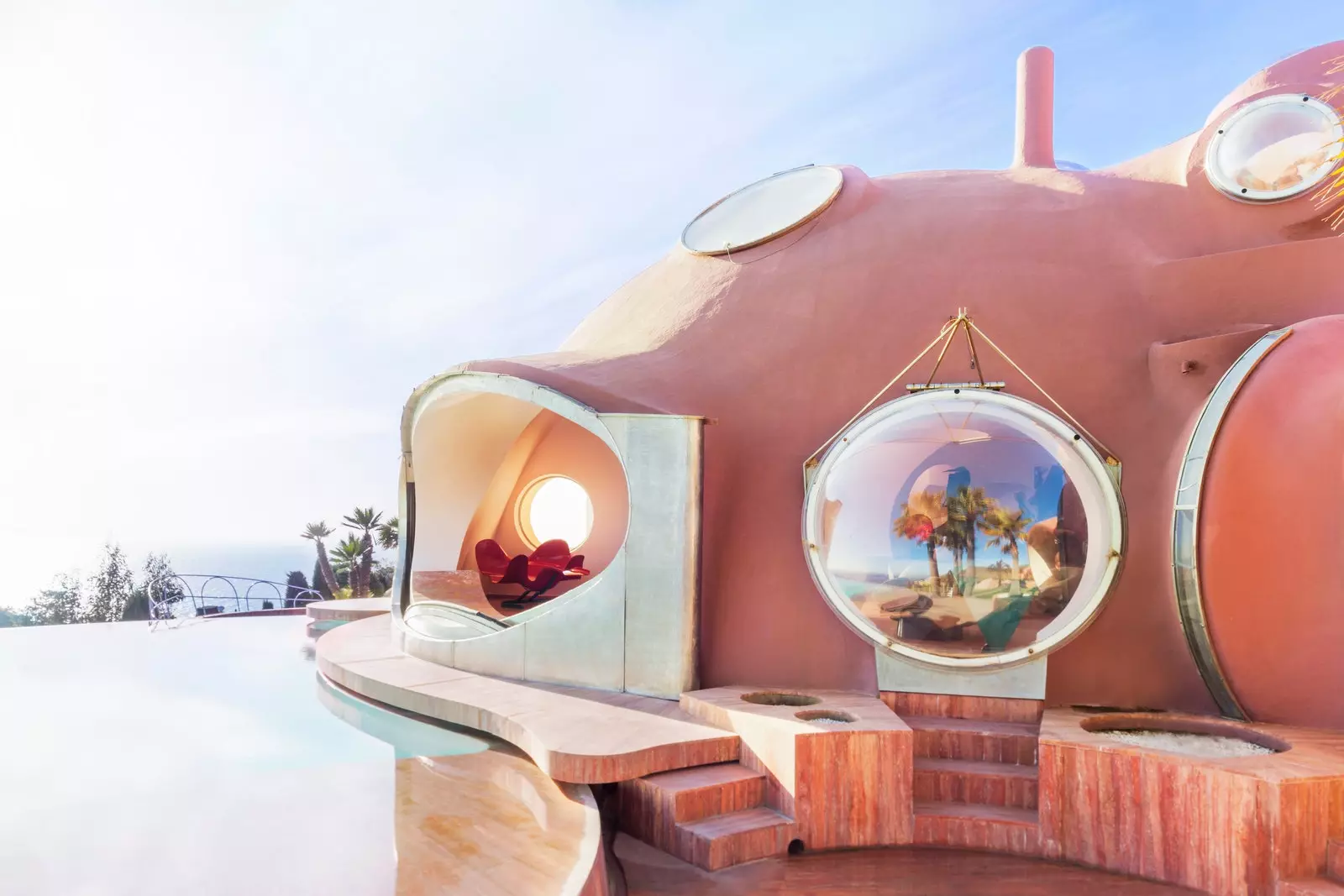
The Palais Bulles
If you have already visited Frank Gehry's Fondation Louis Vuitton in Paris and the Villa Savoye by Le Corbusier and Pierre Jeanneret in its surroundings, we present some of the jewels of French architecture that everyone passionate about this art will want to know.
MAISON LOUIS CARRÉ BY ALVAR AALTO (BAZOCHES-SUR-GUYONNE)
In the 1950s, the prosperous art dealer Louis Carre choose the architect Alvar Aalto to erect his principal residence, being this “total work”, between architecture and furniture, the only construction of the Finnish architect in France and one of his most remarkable private villas.
The sun of him is found one hour from paris , on a hill that adjoins the forest of Rambouillet, so together with the Breton collector they imagined a sloping roof in accordance with the inclination of the place, thus merging the house into the landscape . For the rest, the architect has complete freedom, covering its facade with a careful selection of chaulées bricks, Chartres stone, copper and wood, and the roof of Normandy blue slate.
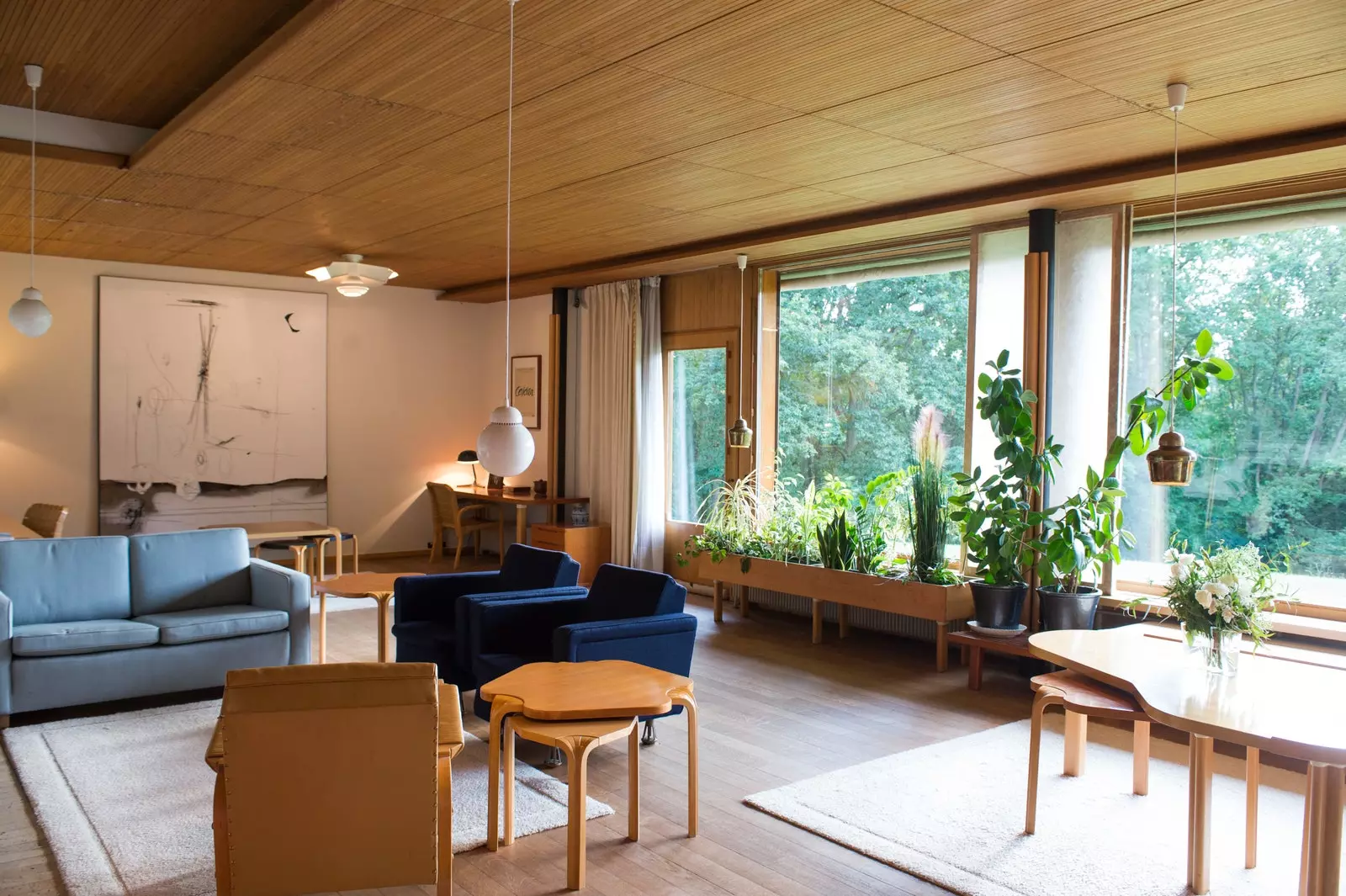
Maison Louis Carre
Inside, dominated by an imposing hall, It harmoniously mixes reddish grès, wood, marble and the roof that protects it in Finnish red pine , forming harmonious organic curves. So this temple of modern art privileged in their spaces Carré's rich collection , paintings of Fernand Léger, Pierre Bonnard, Pablo Picasso, Raoul Dufy, Jacques Villon, André Lanskoy, Paul Klee and Nicolas de Staël ; sculptures by Henri Laurens, Alexander Calder and Alberto Giacometti and pieces of African art.
The Carré couple moved into this abode of comfort and discreet luxury in 1959. They held their famous annual garden-parties there and enjoyed its three main areas with access to the outside. The one formed by the hall, the dressing room, the spacious living room, furnished in neutral tones and presided over by a large window, the cozy library full of books on art, literature or gold work , and the sober dining room dominated by a beautiful custom mahogany table. The private area, made up of three bedrooms; the service area, which brings together the kitchen with La Cornue stoves, the office and the staff dining room.
In this historical monument , the Finn, supported by Artek, carefully designed all its details, the bronze and leather doorknobs, the birch, ash, teak, pine, beech, poplar or mahogany furniture, as well as the 3-hectare garden, the swimming pool, the chaises longues, the changing rooms, the parasols, the lighting and numerous textiles. Much of these elements remain today in the maison , but his works of art were put up for sale in 2002, after the death of both.
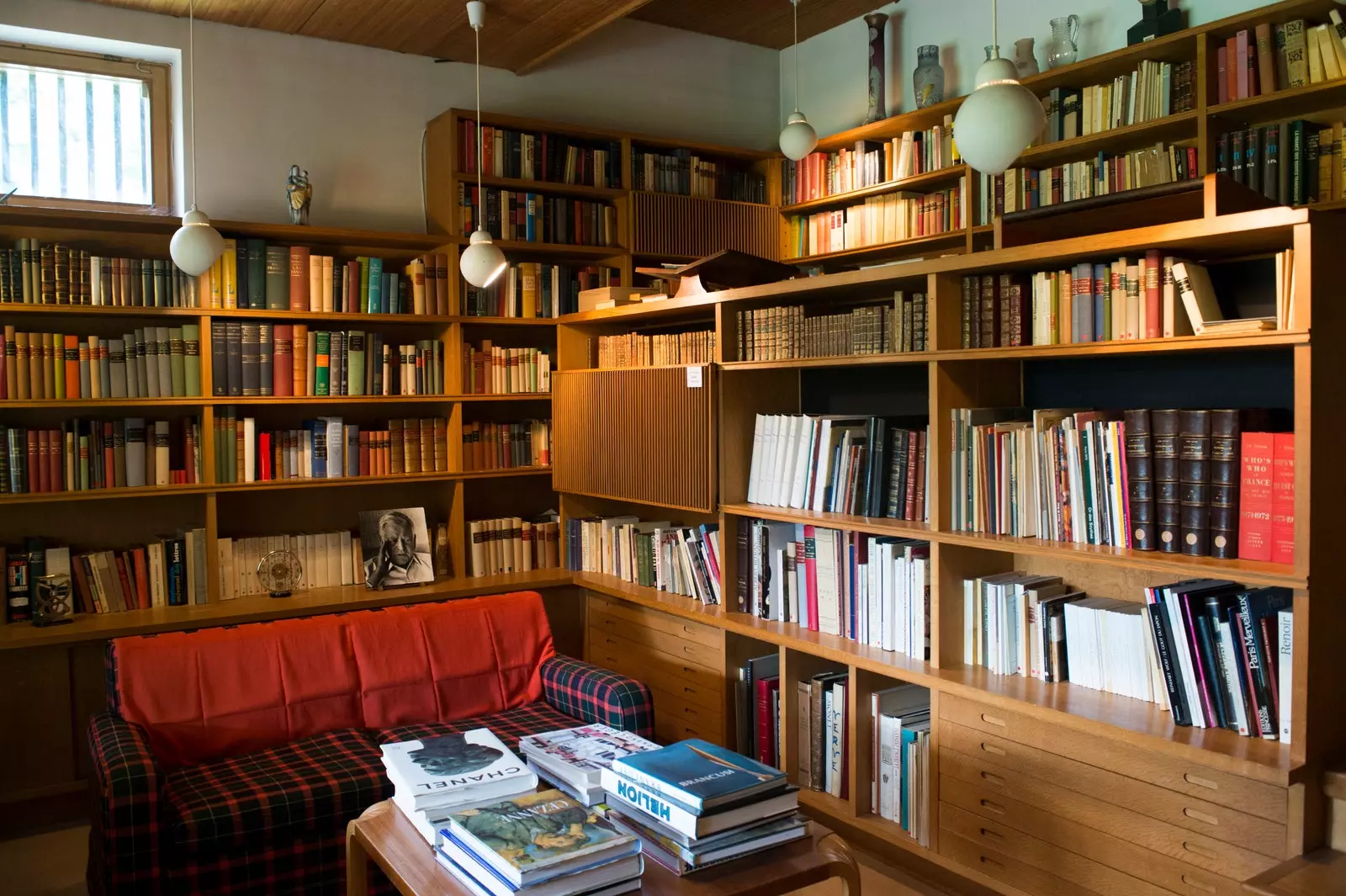
Maison Louis Carre
Since 2007 the Alvar Aalto Association organizes guided tours on weekends , as well as architecture seminars and exhibitions on the beautiful antiquarian collection.
LE PALAIS BULLES BY ANTTI LOVAG (THÉOULE-SUR-MER)
The Palais Bulles is a house-sculpture from 1989 by Hungarian architect Antti Lovag . Declared a Historic Monument, this amazing 1,200 m² villa stands out for its its rounded organic shapes made up of undulating and spherical terracotta colored modules.
The privileged location of its caves, suspended between the sky and the intense blue of the Mediterranean Sea, invites you to dream. Located in the heights, in the listed Côte d'Azur, facing the Bay of Cannes , specifically in the hills of l'Esterel , boasts the impressive panoramic views from its terraces, from its large porthole windows and from the appetizing pool.
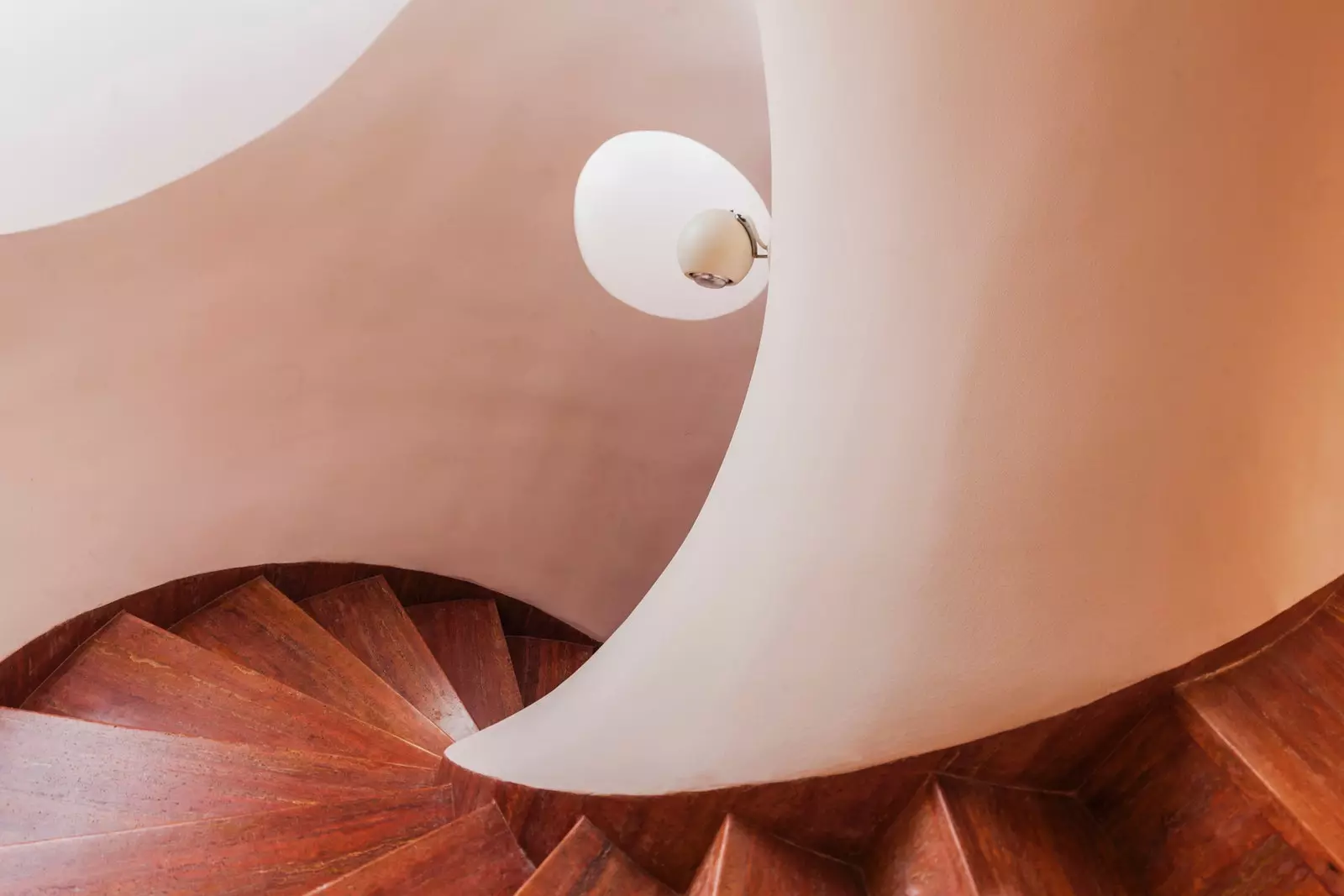
The Palais Bulles
Its labyrinthine futuristic silhouettes extend harmoniously into its interior decoration thanks to the sur mesure furniture made by contemporary artists such as Patrice Breteau, Jérôme Tisserand, Daniel You, François Chauvin and Gérard Le Cloarec.
After the death of its first owner, in 1991 it was acquired by the famous fashion designer Pierre Cardin , which expands it by adding a reception and exhibition space for its collection of furniture and design objects from the 60s and 70s. Today it is not open to the public but it can be privatized.
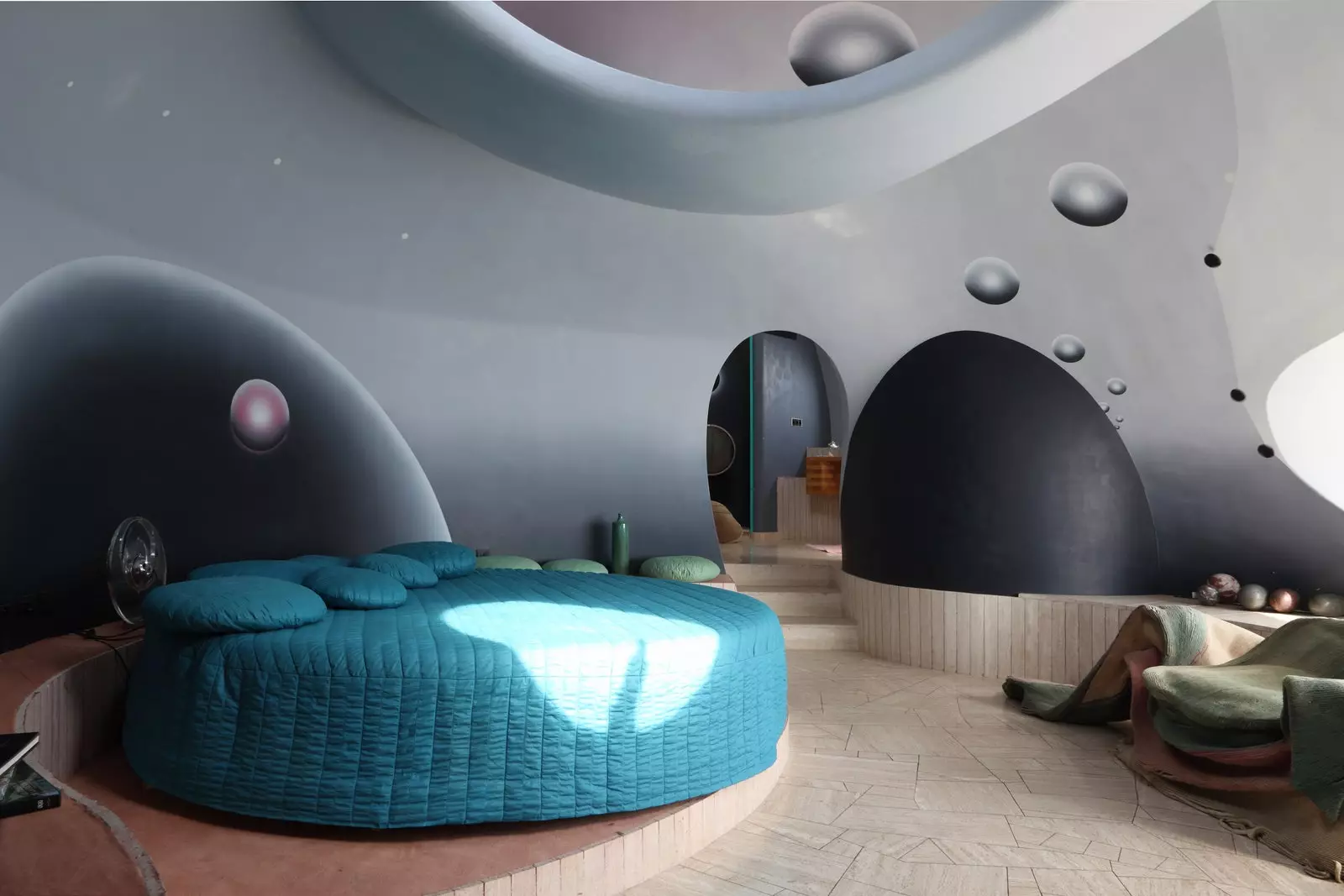
The Palais Bulles
SIÈGE DU PARTI COMMUNISTE FRANÇAISE BY OSCAR NIEMEYER (PARIS)
Built between 1967 and 1980 and considered Historical monument , the headquarters of the French Communist Party offers a surprising architectural walk in three parts, in which the uniqueness of Oscar Niemeyer, concrete, undulating spaces and unexpected shapes stand out.
The first part, built on uneven ground, It has two levels in the basement for garages and other services. , and a half-buried vestibule one meter and a half above street level. The second, houses the emblematic and impressive salle du Conseil national under a white dome with a conical base, furnished by the Brazilian architect, and dressed in thousands of shiny ionized aluminum sheets that provide optimal acoustics and light circulation. And the third, the six-story building that rests only on five pillars , in which its curved facade of steel and aluminum glass, highlights the different volumes.
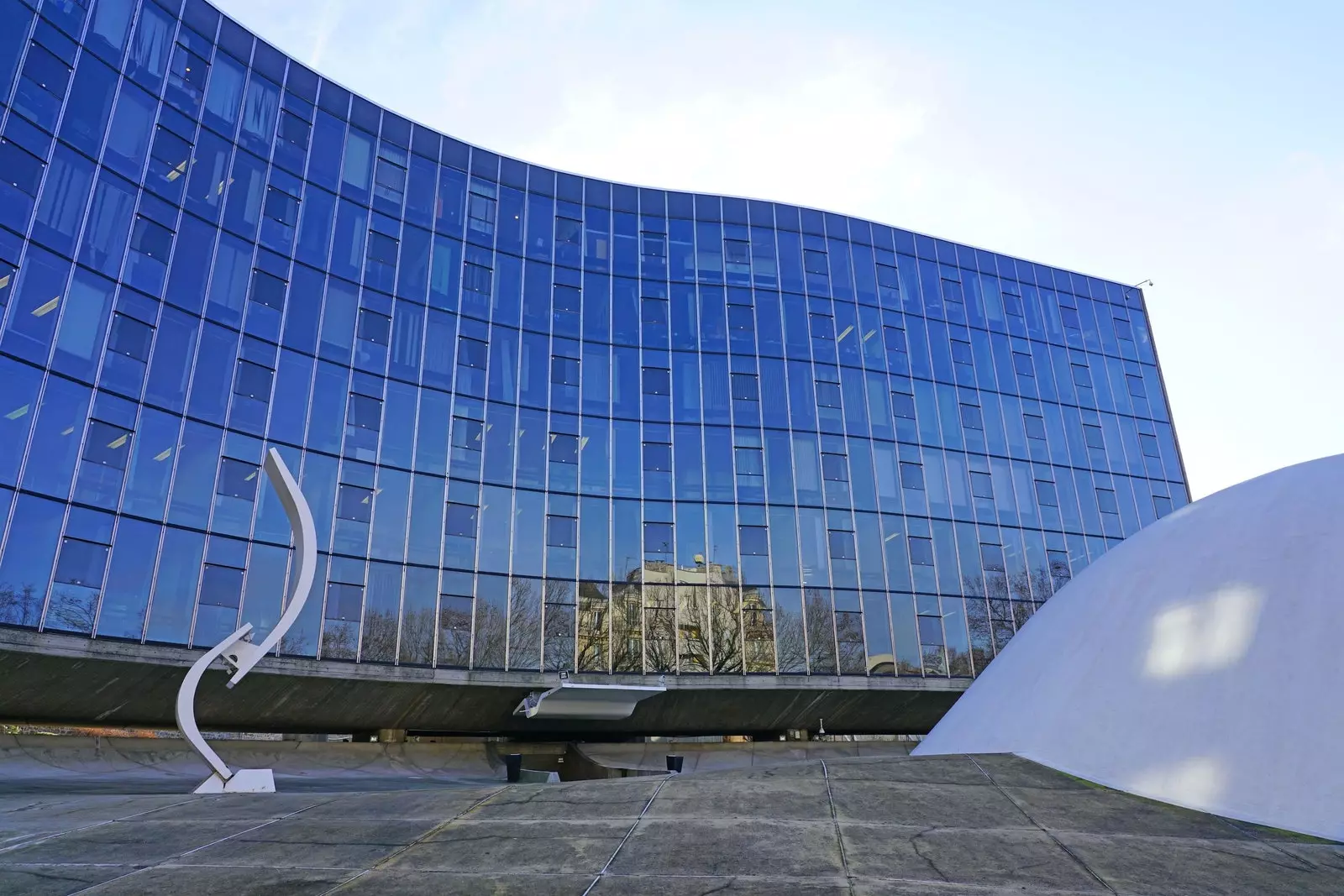
Siège du Parti communiste français
THE MAISON DE VERRE BY PIERRE CHAREAU (PARIS)
The glass house It is almost the only architectural project of the architect and designer Pierre Chareau , a unique piece of 20th century architecture and one of the most beautiful examples of modern movement in France.
Completed in 1931 for Dr. Dalsace, this single-family house with three floors It cannot be seen from the street, since it was made from the reconstruction of a small building hidden at the end of a Parisian courtyard. To do this, an external metal and translucent structure was added to the existing building that supports bricks of solid molded glass.
Its interior, minimalist and rational , is sublimated by its cement floor and the furniture specially designed for it. It also includes the clinic and the owner's private house, where the use of industrialized materials, used in a revolutionary way, make up poetic and abstract spaces with functional lines. For its part, the bolted steel beams, apparent pipes, sliding panels, retractable stairs and cabinets with wheels... they give it a magical aspect of movement.
Being a private property,** its access is limited to the visits that benefit professionals and students of architecture** who are members of the Association des amis de la Maison de verre.
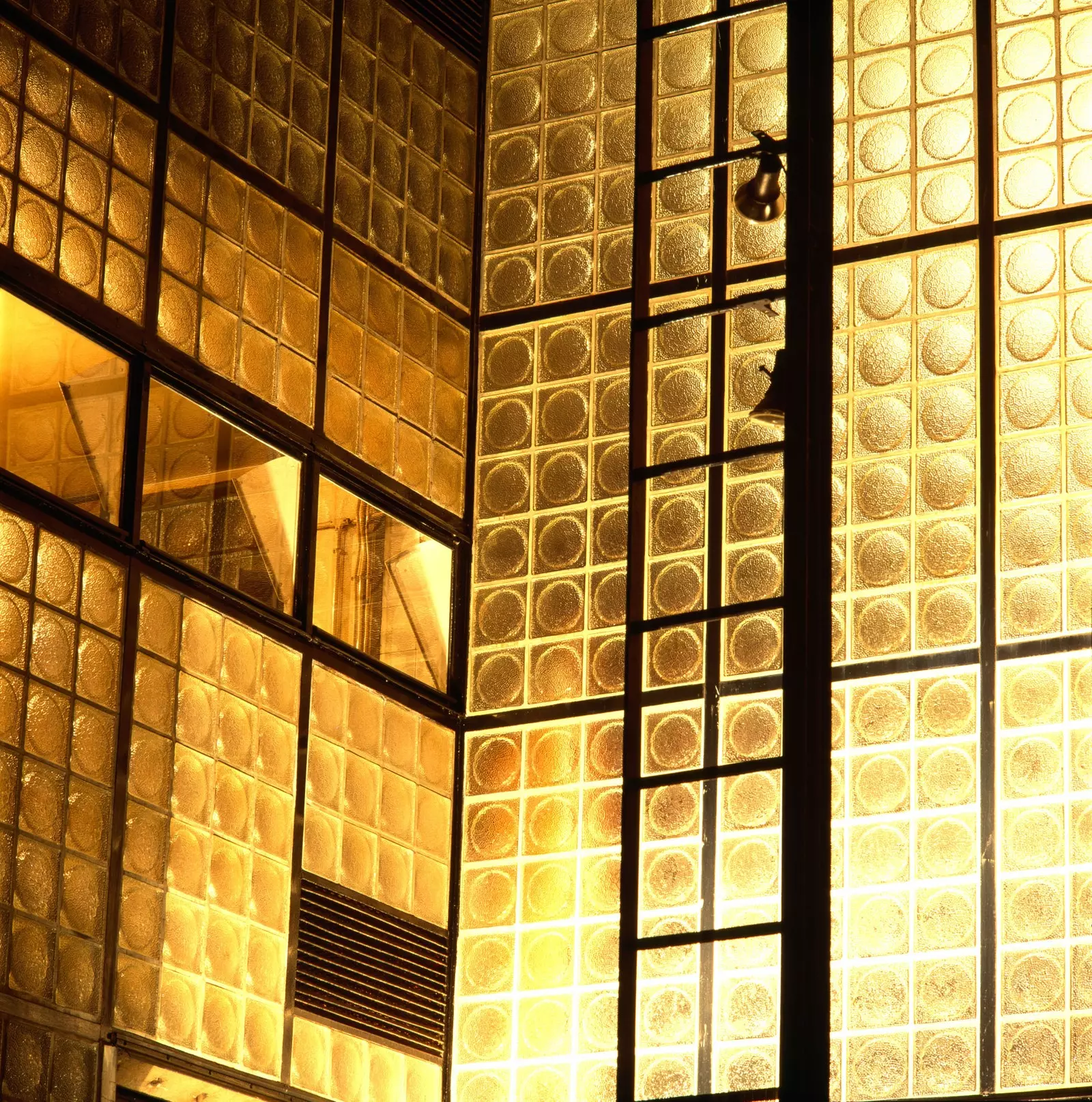
The glass house
THE COLLINE NOTRE-DAME DU HAUT BY LE CORBUSIER, JEAN PROUVÉ AND RENZO PIANO (RONCHAMP)
Located in the Regional Natural Park of Les Ballons des Vosges , the Colline Notre-Dame du Haut is an important reference of modern architecture, since for the construction of this place of great historical, artistic and spiritual value , three well-known architects have participated, Le Corbusier, Jean Prouvé and finally Renzo Piano.
in 1955 Le Corbusier inaugurates the Notre-Dame du Haut chapel, two houses (the abri du pèlerin and the maison du chapelain) and the pyramide de la paix monument , all of them inscribed by UNESCO on the list of World Heritage Sites along with another of his 16 achievements under the title "The architectural work of Le Corbusier, an exceptional contribution to the modern movement".
In 1975, for the 20th anniversary of the chapel, and ordained by his chaplain, Jean Prouvé completes a separate bell tower of the church . Its simple structure is made up of four pillars that support the three suspended bells, two of them from the 19th century and the third, named Charlotte-Amélie-Yvonne-Marie in memory of the mother and wife of Le Corbusier, cast in 1975 and adorned with drawings of the same.
After the chaplain's death in early 2000, the Association Œuvre Notre-Dame du Haut , you want to ensure the spiritual presence of the hill by installing a permanent community at the foot of the chapel that welcomes the faithful, visitors and pilgrims . So Renzo-Piano creates a new entrance, the porterie, which allows the passage from the profane world to the sanctuary. Also in 2006 he erected the Sainte-Claire monastery to house the Poor Clares of Besançon.
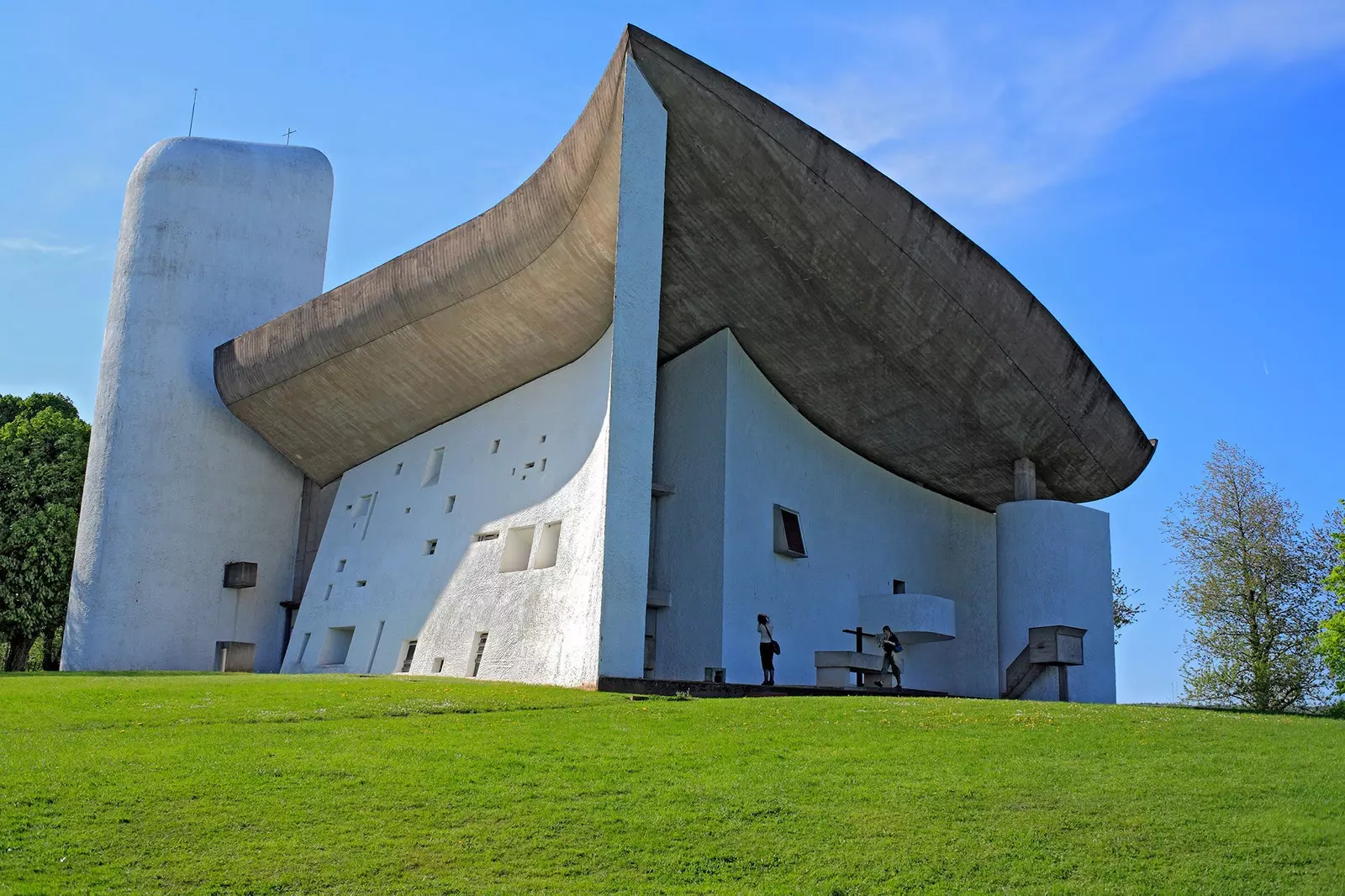
Chapel Notre Dame du Haut, in Ronchamp (Le Corbusier)
THE VILLA CAVROIS BY ROBERT MALLET-STEVENS (CROIX)
The Villa Cavrois , a symbolic work of art and the most successful example of the architectural thinking of Robert Mallet-Stevens , was completed in 1932 near Lille for the textile industry Paul Cavrois and his family.
Mallet-Stevens, a figure of the modernist movement, raises a chateau moderne . Château due to its imposing proportions, divided into two symmetrical wings, reminiscent of the aristocratic residences of the 17th century. And modern, due to the simplicity of its volumes and decoration, the use of state-of-the-art equipment that sought maximum comfort and industrial materials and techniques such as glass and steel.
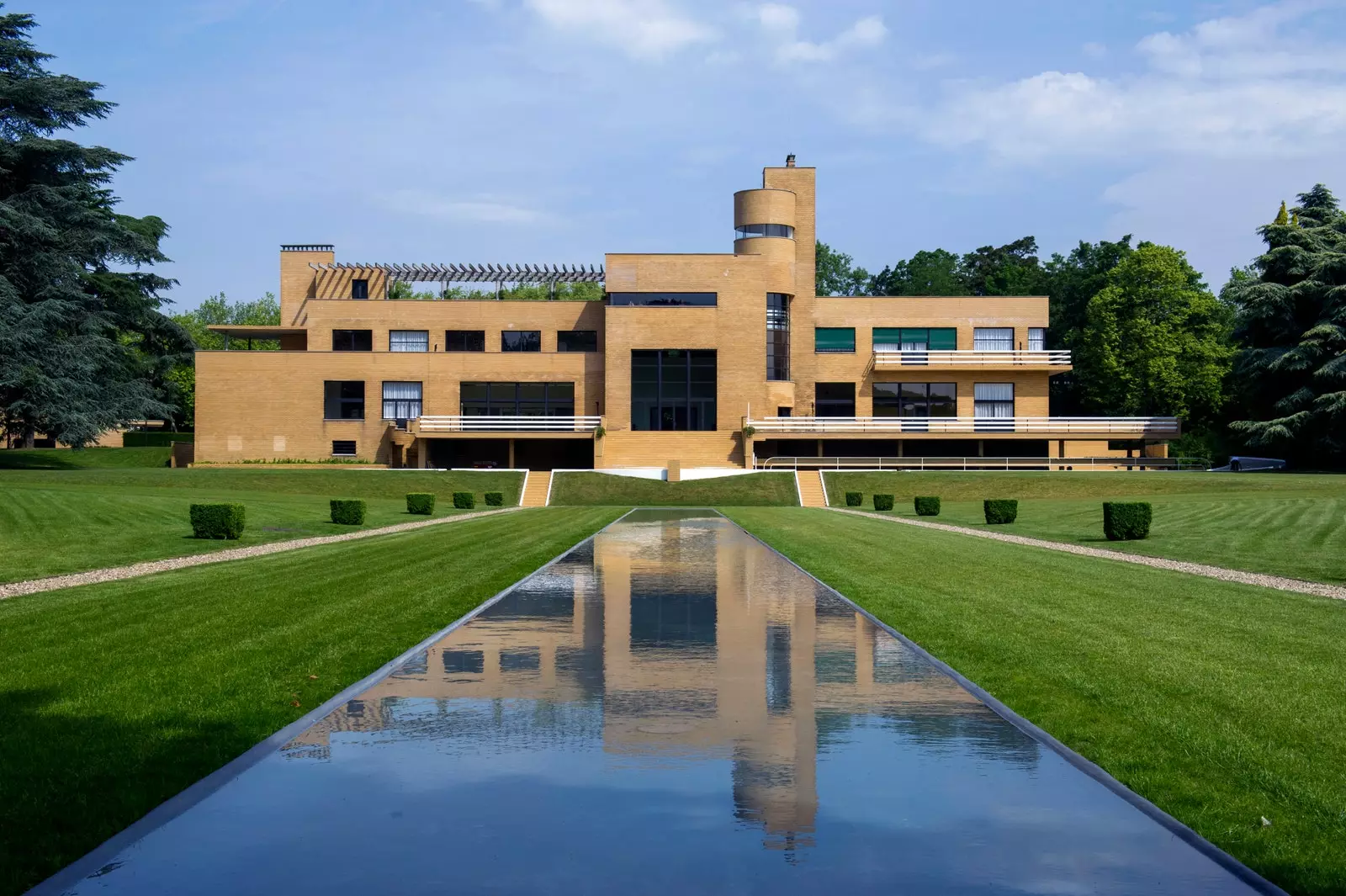
The Villa Cavrois
In addition, the French architect and designer imagines all the interior decoration, defending the total work . Influenced by his experience as a film decorator, the domestic environment had to reflect the psychology of its inhabitants, in this case, a bourgeois family. Thus in the spaces d'apparat, he employs luxurious materials, marbles and precious woods, with delicacy and simplicity to show the prosperity of its owner . And in the service area predominates hygiene and functionality , providing a novelty for the time, the large windows that provided light.
This work of art suffered significant damage for years. rated as historical monument and subsequently acquired by the State, has benefited from a great restoration, in stages , both of the building, and of its park and swimming pool. Open to the public since 2015, the Center des national monuments continues its work preserving its heritage and enriching its scenery through the acquisition of its original furniture, conceived by the architect for the sublime residence of the 20th century.
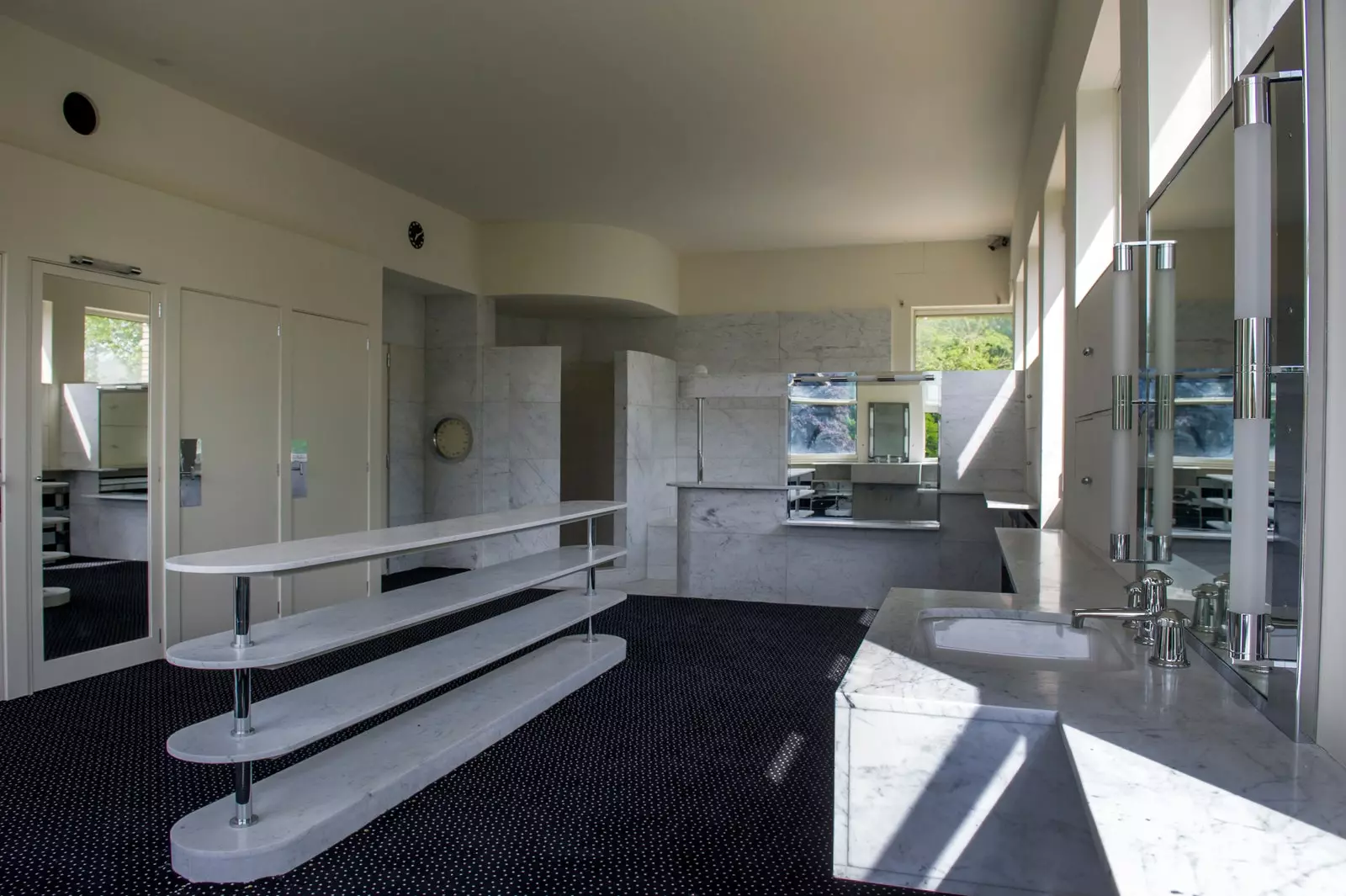
The Ville Cravois
